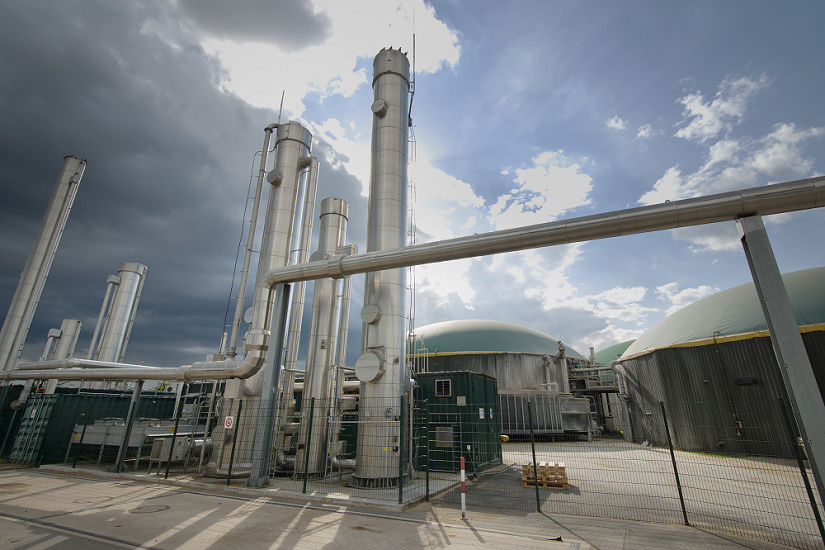
By Bertold Werkmann via Shutterstock
In one of Mexico City’s most populated areas, Iztapalapa, there is a street named Alessandro Volta. With little knowledge about who this man was, we researched a bit and found that Alessandro Volta concluded, in 1776, that there was “a direct correlation between the amount of decaying organic matter and the amount of flammable gas produced”. Sir Humphry Davy determined 32 years later (in 1808) that methane was present in the gases produced during the anaerobic digestion (AD) of cattle manure. The first digestion plant was built at a leper colony in Bombay, India in 1859 (just 83 years later!).
Anaerobic digestion (AD) as a renewable resource has been growing since, in the international context, and has the potential to be a sustainable, affordable solution for wastewater management. In the 21st century, we are still fascinated with the idea of the benefits of biogas production. In modern times, AD is being used as a reliable energy source, and sludge resulting from AD processes can be used as fertilizer. Countries like the UK are producing enough biogas to power 1 million homes, 210 years after Sir Humphry Davy’s discoveries. In fact, according to a new report from the Anaerobic Digestion & Bioresources Association (ADBA) of the UK, in 2017 the total energy generation from anaerobic digestion plants reached 10.7 Terawatt-Hour (TWh) / year.
Besides, the potential of anaerobic digestion has a direct impact on greenhouse emissions : a range of 1.5 to 2.0 million tons (Mt) of CO2-eq per year could be saved by using biogas. Such mitigation would be even larger with close to 15 million tons of organic waste diverted from being disposed in the environment, representing 11.7 Mt of CO2-eq per year. This represents a reduction of 22% of greenhouse gas emissions from the waste sector by 2030. With such mitigation potential in place, up to 87% of the internationally-compromised GHG reduction targets could be achieved.
But the question is: why aren’t bigger countries with proper environmental conditions like Mexico reaching those numbers? What is hindering the potential for biogas production in Mexico? What can be done to develop it?
One of the targets according to SENER, is to obtain at least 35% energy from sustainable sources by 2026. This is an ambitious target considering that in 2016, of total energy production (2,539 TWh/year), 7.1 % (181 TWh/year) came from renewable energy sources, and just 0.17% (4.4TWh/year) came from the biogas. Recent changes in the Mexican legislation is moving towards allowing net billing for energy consumption, with the objective of fostering and diversifying renewable sources. Net billing has already stimulated sales of sub-20-kilowatt residential solar systems, which could make up around 18 percent of all solar capacity in Mexico this year. Biogas from AD can also take a significant percentage of net billing as farms and industries are incentivized to substitute with renewable sources and AD processes for biogas.
Waste can fully harness biogas to provide reliable sources of energy and promote a circular economy in rural and semi-rural areas in Mexico, even without including the potential of agricultural industries. The municipal sewage sludge, human faeces from the rural area, organic fraction of municipal solid waste (MSW) from rural and urban areas, chicken manure, and cow manure (from the dairy industry) represent an overall waste generation of 57.7 million tonnes a year, with the potential methane production of 17.1 billion m3 per year.
Despite these tangible benefits and cogeneration of energy from AD, the main problem in Mexico is the lack of incentives and support from the government to stimulate biogas production and energy generation, limiting the AD growth at all levels of production and making it less attractive for investment from the private sector. For instance, in Mexico only 44.8% of total sewage is collected and, according to the report issued by SENER, the maximum energy production potential from current existing facilities is just 0.3 TWh per year. This is substantially lower compared with the 10TWh per year if all sewage sludge was collected and treated by anaerobic digestion (similar to the current capacity in the UK).
We need to consider waste management as one of the most important issues today, because it affects the availability of materials, energy, and the environment. The sanitation of water by means of anaerobic digestion is a great area of opportunity to invest given its benefits for both communities and the environment. Furthermore, the inclusion of the food waste and agricultural wastes could boost the biogas generation and therefore the energy production. With incentives to invest and maintain AD facilities, Mexico and other countries can advance in reaching sustainability goals to mitigate the effects of climate change by reducing methane emissions and encourage capture these emissions with infrastructures based on AD processes.



Join the Conversation